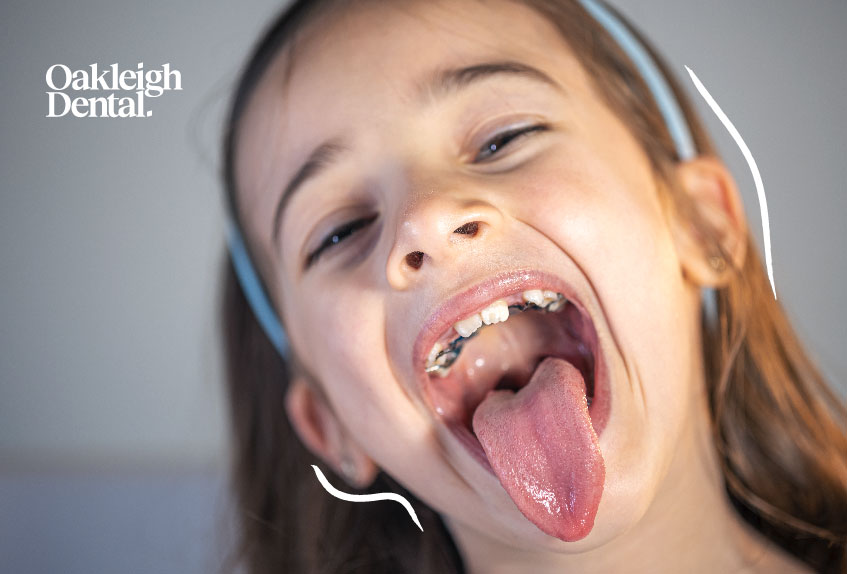Orthodontics is the branch of dentistry dedicated to the prevention of correction of teeth and jaw misalignment. Treatments like braces and Invisalign are commonly associated with the teenage years and later, but receiving orthodontic treatment earlier in life can have significant long-term benefits. Learn more about interceptive orthodontics and how it could benefit your child.
What is interceptive orthodontics?
Interceptive orthodontics is essentially orthodontic treatment that is completed earlier in life, before permanent teeth and the jaw have solidified in place. In essence, it is orthodontics for children, designed to prevent the formation of malocclusion or misalignment before the jaw has fully developed. Interceptive orthodontics is a preventative approach while the mouth is still developing, to prevent issues like crossbites and crowded teeth from occurring.
Benefits of early orthodontic treatment
If orthodontic treatment is at all necessary for a child, it’s much better to get it started early than to wait. During childhood, the bones of the jaw are still developing and much more responsive to treatment and movement. As you get older, the bones become more fixed and it is much harder to move them. If a dentist or orthodontist identifies a child is at risk of developing an issue related to their teeth and jaw position, it is much easier to prevent by treating it early than to try and correct it at a later stage.

Early intervention orthodontics can also alleviate or prevent associated conditions that occur due to a poor bite, including teeth grinding, gum disease and tooth decay. Interceptive treatment can also reduce the need for tooth extractions later in life, creating enough room for all your adult teeth before they erupt. Going through orthodontic treatment during childhood may not wholly replace the need for orthodontics later in life, but it will make it much less likely and is preferable for lasting results.
Best age to start orthodontic treatment
We recommend that every child should have an initial orthodontic assessment at the age of 7, so that the dentist or children’s orthodontist can assess if there are any problem signs for the teeth and jaw development. Getting a check at this age gives the professional a good amount of time to plan any necessary treatments while the jaw is still responsive.
Early interceptive orthodontics is all about creating the right amount of room in the mouth for adult teeth. At this age, baby teeth are beginning to fall out and make way for adult teeth, which is why it is so important for children to come for a check up. Early treatment often spares the need for more difficult treatment later in life, and also improves your child’s overall oral health in the immediate and long-term future.

Signs your child needs early orthodontic treatment
As we’ve mentioned, we strongly recommend every child should visit a dentist or orthodontist around age 7 for a full assessment of their jaw development. While many children won’t require any treatment at this stage, it is common that some preventative treatment will be recommended.
Some common signs your child could benefit from interceptive orthodontics include mouth breathing and thumb sucking, as well as protruding teeth. Children needing orthodontics may also have difficulty chewing or have noticeably crowded or crooked teeth. Unfortunately, you may always be able to identify if your child is suffering from one or more of these issues, which is why attending your regular dentist appointment every six months is crucial.
Types of orthodontic treatment
Orthodontics for kids can take many different forms, depending on how their jaw and mouth are developing. These are the most common types of treatment.
Space maintainer
In normal circumstances, children begin to lose their baby teeth as they get older so that their mouth has room for their adult teeth to emerge. However, when one of these teeth is lost prematurely, the adult tooth may not be ready to begin emerging in its place. If nothing fills that gap, surrounding teeth may begin drifting towards the open space and taking up the room that the adult tooth will need later.
In these situations, children may be advised to wear a band and loop space maintainer, which is designed to keep that gap free for a permanent tooth. A space maintainer is made of two main parts: a metal band that sits around an adjacent tooth, and a wire loop that pushes against the tooth on the other side of the gap to prevent either tooth from moving into the space. Some maintainers include a fake baby tooth to fill the gap and make chewing more comfortable.

Palate or lower jaw expander
As we noted with space maintainers, permanent teeth require enough room to erupt safely in the mouth. Unfortunately, some children’s jaws will naturally be on the narrower side, and in these cases, a palate or lower jaw expander is used to expand and widen the upper or lower jaw, allowing enough space for tooth eruption. There are both removable expanders or fixed expanders.
Fixed expanders work by keeping the upper or lower jaw under a small amount of constant pressure, causing it to widen. An expander is made of two halves, each attached to the back molars, and connected in the middle by a screw. A key is used to turn this screw on a schedule, expanding the jaw over time. The appliance is cemented into place temporarily whilst expansion is taking place, generally over a period of a few months.
Removable expanders work in exactly the same way but are designed to be removed for eating, drinking and cleaning teeth. They can often be a lot more bulky than their fixed counterparts making it harder to talk with them in place.
Partial braces
Also known as limited braces, this is a treatment that works the same as traditional braces, but only on a particular section of the teeth to correct minor cases of misalignment. This is only recommended when the child needs a small amount of correction to the position of a few teeth. It is not used in severe cases of crowding or when there is a major alignment problem.
Prevent later issues with preventive orthodontics
The earlier you begin, the easier your treatment will be. With years of experience in children’s dentistry and orthodontics, the team at Oakleigh Dental are here and ready to help. Book an orthodontic consultation today to get out in front of any treatment your child needs, and set them up for long-lasting oral and dental health.


